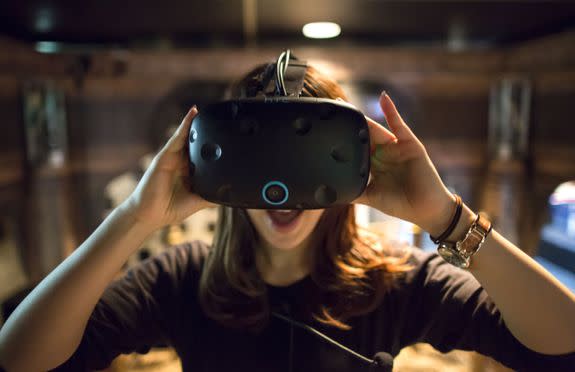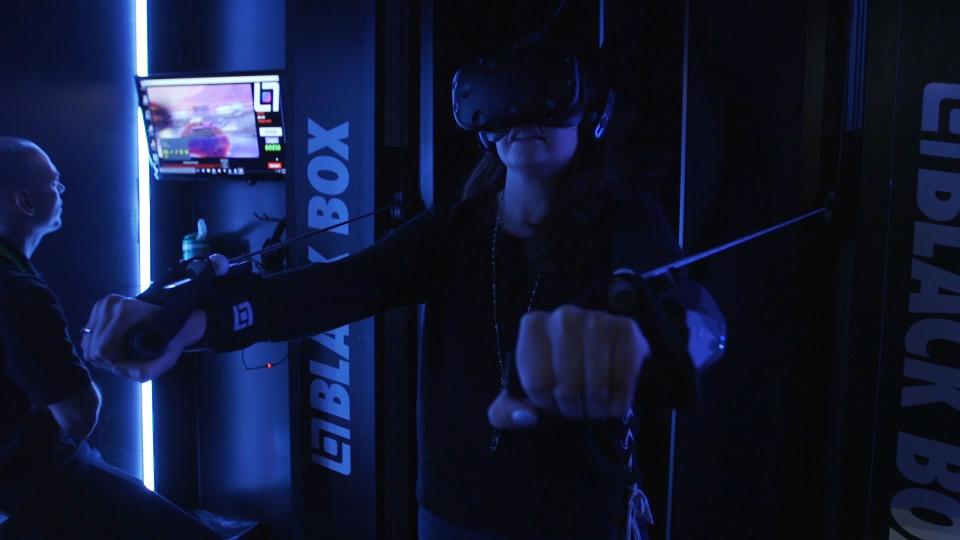Virtual reality's moment looks to be over in gaming, at least for now

Virtual reality isn't happening yet, folks. Not for video games, at least.
The latest "State of the Industry" results are in, and a declining interest in VR is one of the key takeaways from the annual survey administered by the Game Developer's Conference.
SEE ALSO: Airbnb might actually make virtual reality useful
It's OK to feel a bit of whiplash here. The widely hyped technology seemed like it was about to break through and dominate everything back in 2015 and 2016, between Facebook's acquisition of Oculus VR and the subsequent launches of Oculus Rift, HTC Vive, and PlayStation VR (as well as mobile alternatives like Gear VR and Cardboard). But a slow rate of adoption among consumers across 2016 and 2017 amounted to a big, bright reality check.
Of the roughly 4,000 individuals polled — representing a cross-section of creators at all levels of the industry — 29 percent expressed the belief that developing for VR and alternate reality (AR) isn't a long-term, sustainable business in the gaming world at this point. It's the third year GDC's annual survey has asked the question and the first time that number has gone down.
It's not a huge drop, to be clear. In both the 2016 and 2017 surveys, 25 percent of respondents expressed doubt about AR/VR's long-term potential. But the 2018 survey digs deeper, and the details matter here.
It's interest in VR specifically that's waning. The number of developers working on AR games remains "steady," but those who are already in the business of creating VR games don't expect to be doing it much longer.
"Just on the consumer game side of VR, what we've noticed is there was a lot of [venture capital] funding for games, but a lot of those games have shipped in the last 12 months," said Simon Carless, executive vice president at UBM and one of GDC's organizers, in a recent interview.
"I just don't think the install base in most cases has been quite there for them to make their investments back, unfortunately. People will continue to work in VR, I just think it will potentially be more indie studios, or maybe more things funded by hardware companies who want examples of the games to showcase."
AR is more attractive because there's much less of a buy-in at the consumer level for these types of experiences. A typical VR setup requires either a relatively powerful PC or a PlayStation 4, plus whatever VR headset is supported by each platform (Oculus Rift/HTC Vive for the former, PSVR for the latter).
There are mobile VR rigs, such as Google Cardboard, Gear VR, or the upcoming Oculus Go, but they're all a significant step down in terms of the types of experiences they can deliver compared to the more expensive options. AR has proven to be a much better fit for mobile because pricey headsets aren't a requirement and most modern smartphones are up to the task.
Just look at Pokémon Go, undoubtedly the most popular AR release to date. Everything in that game happens on your smartphone screen. More than that, it's a "play anywhere" type of experience, no tethered headset required. No one's managed to replicate Pokémon Go's impact yet, but that success did prove there's a market for what it offers.

Image: Tomohiro Ohsumi / Getty Images
Headsets are the real sticking point in the eyes of many developers. Of those surveyed, 31 percent don't see VR/AR headsets being a common sight in more than one-tenth of households until 2021-2022, and another 15 percent think that won't be the case until 2023-2024. Only 17 percent expect to see a significant increase in headset ownership over the next two years.
It's the same cost issue would-be VR adopters face now. Close to half of the developers surveyed — 41 percent — think mobile platforms will be the dominant ones for "immersive reality" experiences in five years.
None of this is new or surprising. On the 2017 survey, one respondent wrote: "At the moment, the hardware is still too expensive. Software is only coming because of first-party funding; once that dries up, I am concerned that there won't be a large enough install base."
Fast-forward to one year later and the 2018 survey results bear that observation out. People aren't buying into VR and, as Carless observed, the outside funding sources that help drive game development are disappearing.
What we're seeing in the GDC "State of the Industry" survey's results is reality setting in. The early Kickstarter success of Oculus Rift back in 2012 thrust VR into the spotlight before it was really ready. It took almost four years after the Kickstarter's launch for Rift's consumer release to happen, in March 2016.
Even then, VR wasn't quite there. First-generation Rift and Vive experiences are hindered by the need for headsets to be wired in. What's more, many users — and city-dwellers especially — don't have the space in their homes to take full advantage of VR.
All of the early excitement around Oculus Rift's Kickstarter success and subsequent $2 billion Facebook acquisition came with a cost: Analysts all throughout the industry started speculating a bright future for the technology based on early signs.
One 2015 report from CCS Insight foresaw a $4 billion market for VR by 2018, with an expectation that 24 million devices would be sold this year. Another report from the same year, by Tractica, predicted a $21.8 billion hardware and software market for VR by 2020.
It's clear now in hindsight that those were ambitious estimates. But all of this isn't to say VR is on its way out. The tech is still in its infancy, and it continues to improve every year. The majority of consumers haven't embraced VR gaming, and it's looking like they won't anytime soon, but the tech itself has already proven its worth outside of entertainment.
"What we're seeing in VR ... is other applications," said Katie Stern, general manager of GDC. "So we're seeing it get more traction in things like training, or education-based things, healthcare has taken to it pretty well. So I think in [those spaces] we'll see more growth in that area than we will in the entertainment and games spaces."
WATCH: This VR gym makes you work out by playing games


 Yahoo News
Yahoo News 
